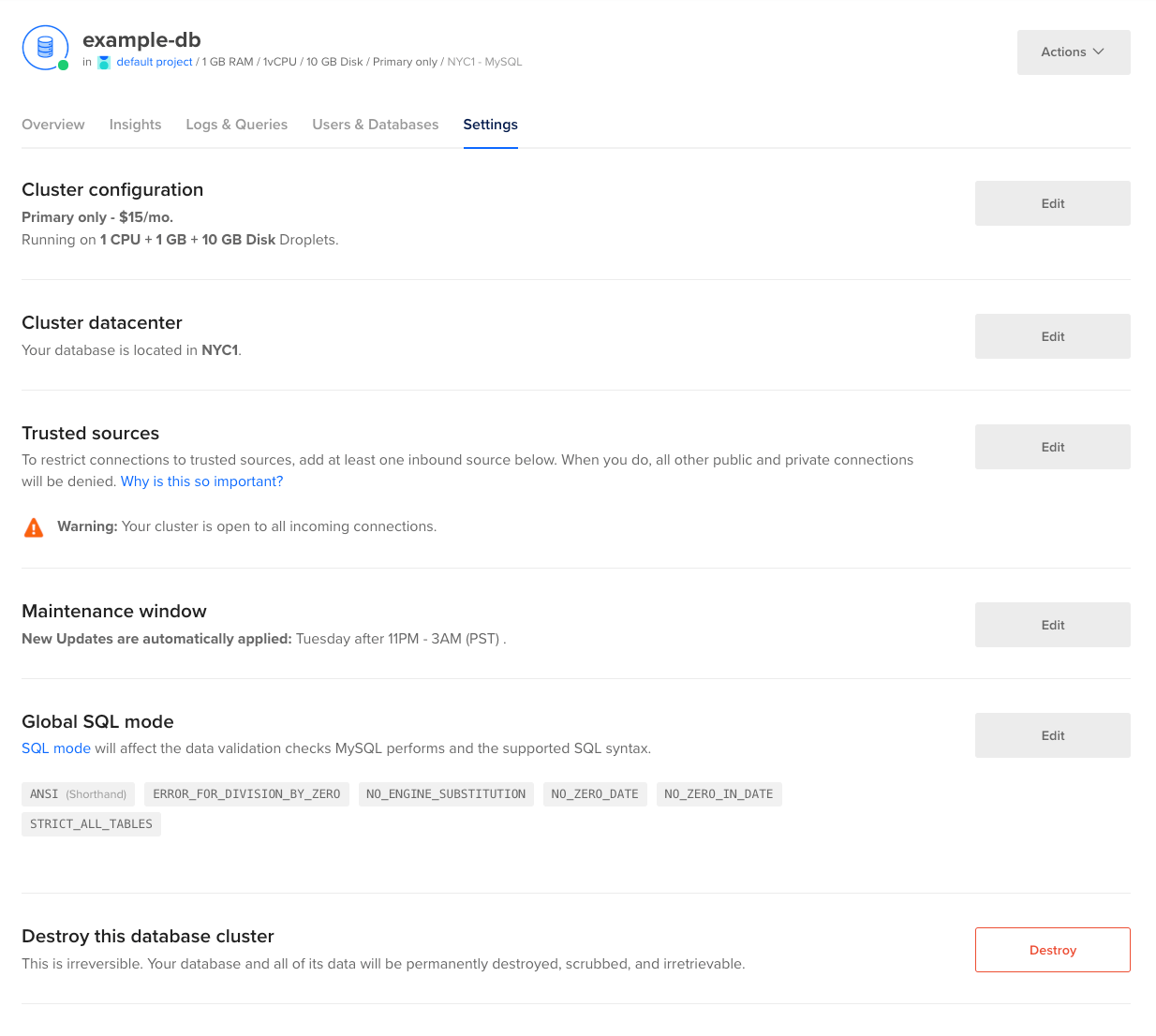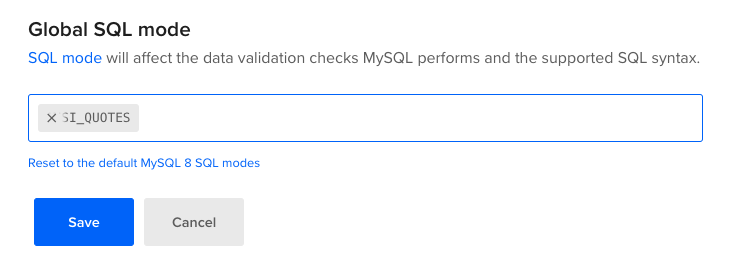sql_require_primary_key as True. Setting it to False may severely impact replication and cause issues.
Validated on 16 Dec 2025 • Last edited on 16 Dec 2025
MySQL is an open source, object-relational database built with speed and reliability in mind. Its large and active developer community has created many third-party applications, tools, and libraries that expand MySQL’s functionality.
MySQL can operate in different SQL modes. Global SQL modes affect the SQL syntax MySQL supports and the data validation checks it performs. You can add and remove modes as needed, or remove all modes from your cluster if desired.
To set the global SQL mode for a MySQL cluster, find the cluster on the Databases page and then click the cluster’s name. From the database’s Overview page, click the Settings tab to view the settings for the cluster.

In the Global SQL mode section, you can see the current SQL modes in use. To add or remove modes, click Edit.
Select an available SQL mode from the drop-down menu or start typing the name of a mode to select from the results that match. When finished, click the Save button to apply the changes or the Cancel button to cancel editing. You can click the Reset to the default MySQL 8 SQL modes links to revert to the default settings.

To remove modes, mouse over the mode you want to remove and then click the “x” icon to remove it from your cluster.

The default SQL modes for MySQL on managed databases are as follows:
ANSI_QUOTESERROR_FOR_DIVISION_BY_ZEROIGNORE_SPACENO_ENGINE_SUBSTITUTIONNO_ZERO_DATENO_ZERO_IN_DATEONLY_FULL_GROUP_BYPIPES_AS_CONCATREAL_AS_FLOATSTRICT_ALL_TABLESIn certain cases, you may also want to adjust the sql_require_primary_key, which determines whether primary keys are a requirement. When set to True (default), primary keys are required. When set to False, primary keys are optional. However, we do not currently support adjusting this mode in the control panel. Instead, you can set this mode by making a configuration request via our API.
sql_require_primary_key as True. Setting it to False may severely impact replication and cause issues.
See the official MySQL 8 documentation for a full list of supported SQL modes.
Try using different keywords or simplifying your search terms.